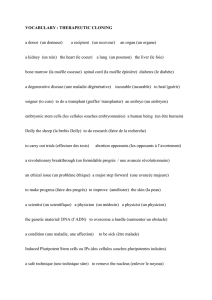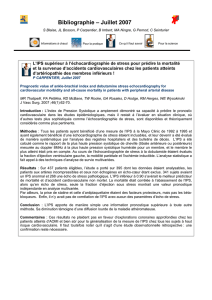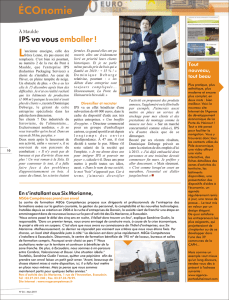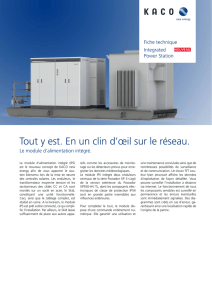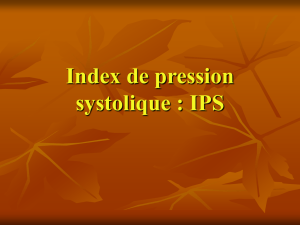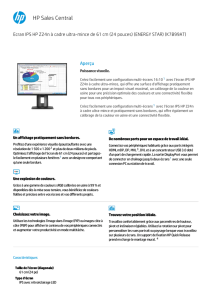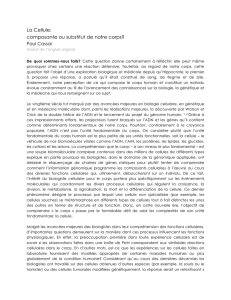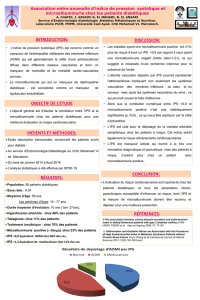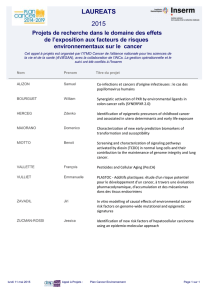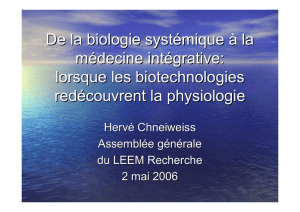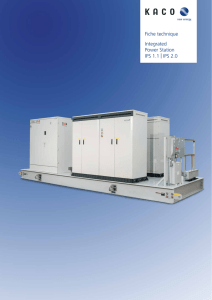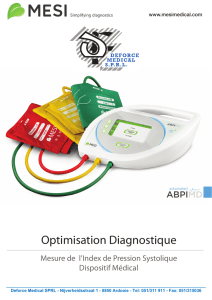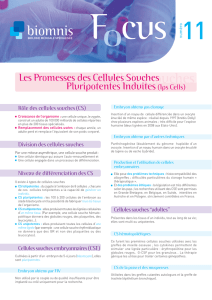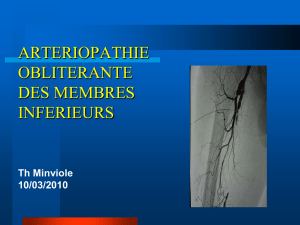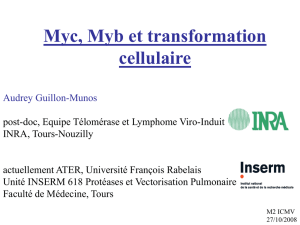iPS cells - carabinsnicois.fr
publicité
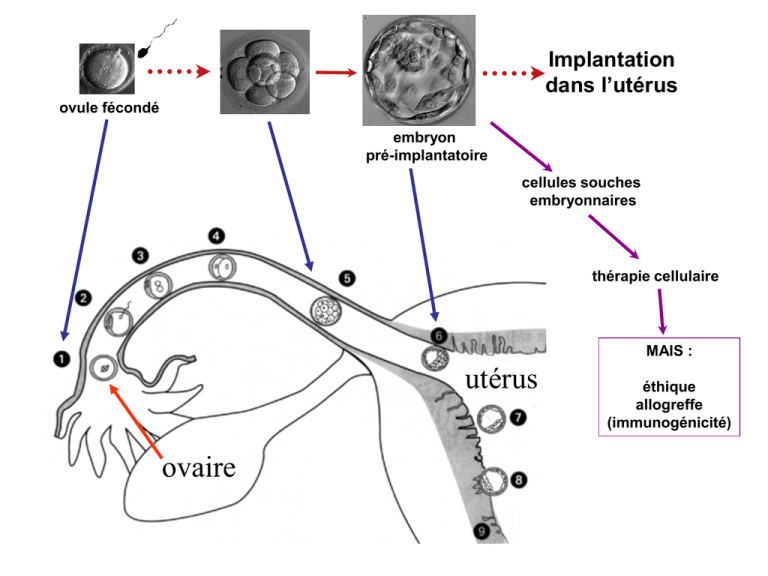
Implantation dans l’utérus ovule fécondé embryon pré-implantatoire cellules souches embryonnaires thérapie cellulaire MAIS : utérus ovaire éthique allogreffe (immunogénicité) Loi de bioéthique (révisée en 2004): 1. Interdit le clonage (thérap. et repro.) 2. Interdit la production et l’utilisation d’embryons surnuméraires pour la recherche médicale 3. Autorise sous dérogation l’utilisation de lignées ES humaines à visée thérapeutique 4. Autorise sous dérogation la dérivation de lignées ES humaines à visée thérapeutique à partir d’embryons surnuméraires. Rejet immunitaire des ES clonage nucléaire à visée thérapeutique ovule fécondé embryon pré-implantatoire cellules souches embryonnaires autologues thérapie cellulaire autogreffe ovocyte sans noyau noyau adulte MAIS : éthique cellule adulte différenciation greffe thérapeutique (autogreffe!!) culture des cellules souches embryonnaires neurones « Clonage thérapeutique » noyau adulte 5 jours cellule adulte ovocyte sans noyau en culture « Clonage reproductif » (Dolly 1998) Ré-implantation dans l’utérus embryon pré-implantatoire différenciation greffe thérapeutique (autogreffe!!) neurones « Clonage thérapeutique » culture des cellules souches embryonnaires - marchandisation du corps de la femme (Hwang) - statut de l’embryon (âge, droit) - dignité humaine (statut enfant issu du NT) - espèces hybride (technique et problèmes) Une barrière technique ne peut être une réponse à une question d’éthique. « Clonage reproductif » Ré-implantation dans l’utérus embryon pré-implantatoire Comment reprogrammer une cellule somatique en cellule plutipotente? - mélange cellulaire: fusion cellulaire - transfert de noyau: noyau ES dans cellule somatique (allogénique) - Reprogrammation génique: induced pluripotent stem cells: Yamanaka (Kyoto) 2006 in mice Criblage de gènes de pluripotence sur des fibroblastes (combinaison de cocktails) Tra1-81 oct-4 sox-2 Klf-4 c-myc 21-30 jours MEF Nanog iPS tératome Alk. ph chimère Obtention of autologous pluripotent cells: The iPS technical breakthrough Derivation of iPS cells from human fibroblasts Oct4/Sox2/Klf4/c-myc Oct4/Sox2/Nanog/Lin28 Fibroblasts Non-iPS iPS (Yamanaka et al, Cell, 2007) Pluripotency of iPS cells: 2- Teratoma (Daley et al, Nature 2008) Pluripotency of (murine) iPS cells: 3- Chimeric mice/germline transmission Chimera x WT (Jaenisch, Cell Stem Cell 2007) (Jaenisch, Nature 2007) Comment reprogrammer une cellule somatique en cellule plutipotente? Tra1-81 oct-4 sox-2 Klf-4 c-myc 21-30 jours MEF Nanog iPS tératome Alk. ph chimère iPS de souris en 2006 iPS humaines en 2007. Confirmé par 2 labo US utilisation de rétrovirus et c-myc oncogène efficacité très faible (0.05%) Entre 2007 et 2010: - iPS sans insertion rétrovirale (adénovirus, protéines recombinantes, molécules chimiques,... - amélioration de l’efficacité (de 0.05 à 1%) - reprogrammation de différents types cellulaires et de cellules de patients iPS (induced Pluripotent Stem cells) fertilized oocyte 8-stage cells blastocyst ectoderm mesoderm endoderm embryonic stem cells Self renewal Pluripotent Cell therapy Cellular model: - Embryonic development - Toxicological tests - Drug design neurons epidermal cornea mammary glands dermis (fibroblasts) muscle adipocytes endothelial hematopoeitic c-myc klf-4 oct-4 sox-2 (nanog) (LIN 28) pancreas liver intestine thymus - Cellular proliferation (c-myc, Klf4) - Chromatin remodeling (Klf4) - Reactivation of ES cell genes (oc-4/sox-2) - Establishment of ES transcriptomal circuitry hES (Hochedlinger, Cell Stem Cell 2007) hES (ES-derived) Fibro iPS iPS iPS (ES-derived) Fibro Pluripotency of iPS cells: 6- Gene expression hES iPS iPS (Daley et al, Nature 2008) (Yamanaka, Cell 2007) pluripotency Cell cycle pluripotency ? RNA stability, Let-7g miR processing Yamanaka, Nat. Biot, 2007 - Reduced efficiency - Delayed reprogramming + - Increased specificity - No tumor Pas de problème d’éthique Autogreffe (?) oct-4 sox-2 Klf-4 c-myc 21-30 jours cellules de patients neurones iPS neurogenerative disease A résoudre: 1. extinction des gènes 2. c-myc 3. épigénétique?? 4. coût 5. allogénique (comme sang) Low efficiency of reprogramming 1- Differentiated hES cells (CD45+ cells, fibroblasts-like) (0.1%) 2- Fetal cells (MR90, Detroit551…) 3- Neonatal foreskin cells 4- Adult dermal fibroblasts (0-0.02%) ≠ Mouse B cells (3.3%): quite efficient? (MEF: 0.5%) Efficiency of reprogramming Recombinaison homologue (KO) neoR loxP loxP thérapie génique non insertionnelle ? anémie à hématies falciformes, drépanocytose Proof-of-principle of therapeutic potential of iPS HbSS HbA 2/2 A/T Science, 2007 (4) transplantation (3) IPS differentiation (1) Obtention of autologous iPS (2) Correction by homologous recombination 2/2S Dystrophyc Epidermolysis Bullosa Coll. VII DEB keratinocytes R- DEB keratinocytes DEB-fibroblasts H. R DEB-fibroblasts DEB-keratinocytes DEB-iPS R-iPS A résoudre: 1. c-myc, rétro,... 2. HR effect? 3. épigénétique (ageing) ?? 4. coût R-iPS-derived fibroblast (coll. VII) R-iPS-derived keratinocytes (coll. VII) Cellular models: Human AEC-iPS (R304W) ES AEC-ES cells cells stroma -serum BMP-4 ectoderm (K8/K18) DNp63 mutp63 X epidermal cells (K5/K14) Cellular models: Human AEC-iPS (R304W) loxP EF1 Oct4 F2A Klf4 IRES Sox2 P2A c-myc loxP ED (R304W) fibroblasts H. van Bokhoven ED-iPS stroma -serum BMP-4 ectoderm (K8/K18) X X epidermal cells (K5/K14) PRIMA-1 N CH2OH CH2OH Klas Wiman (Sweden) Isabelle Petit Cellular models: Human AEC-iPS (R304W) loxP EF1 Oct4 F2A Klf4 IRES Sox2 P2A c-myc loxP ED (R304W) fibroblasts H. van Bokhoven ED-iPS ? stroma -serum BMP-4 ectoderm (K8/K18) epidermal cells (K5/K14) PRIMA-2 PRIMA-1 N CH2OH CH2OH Klas Wiman (Sweden) Isabelle Petit
